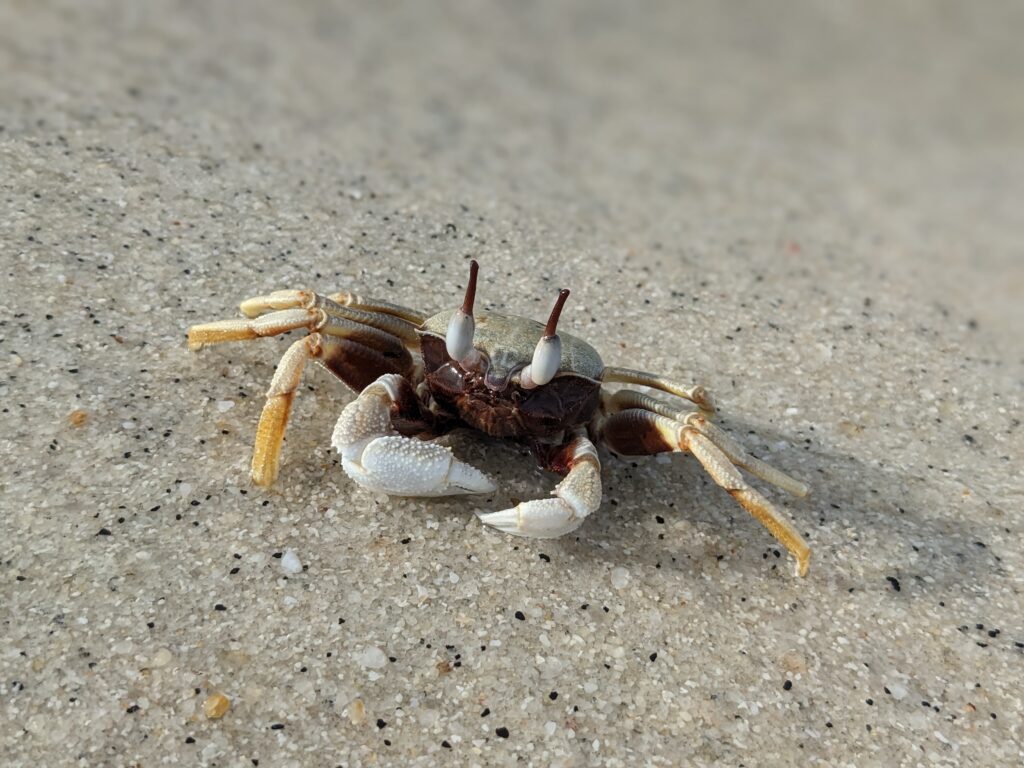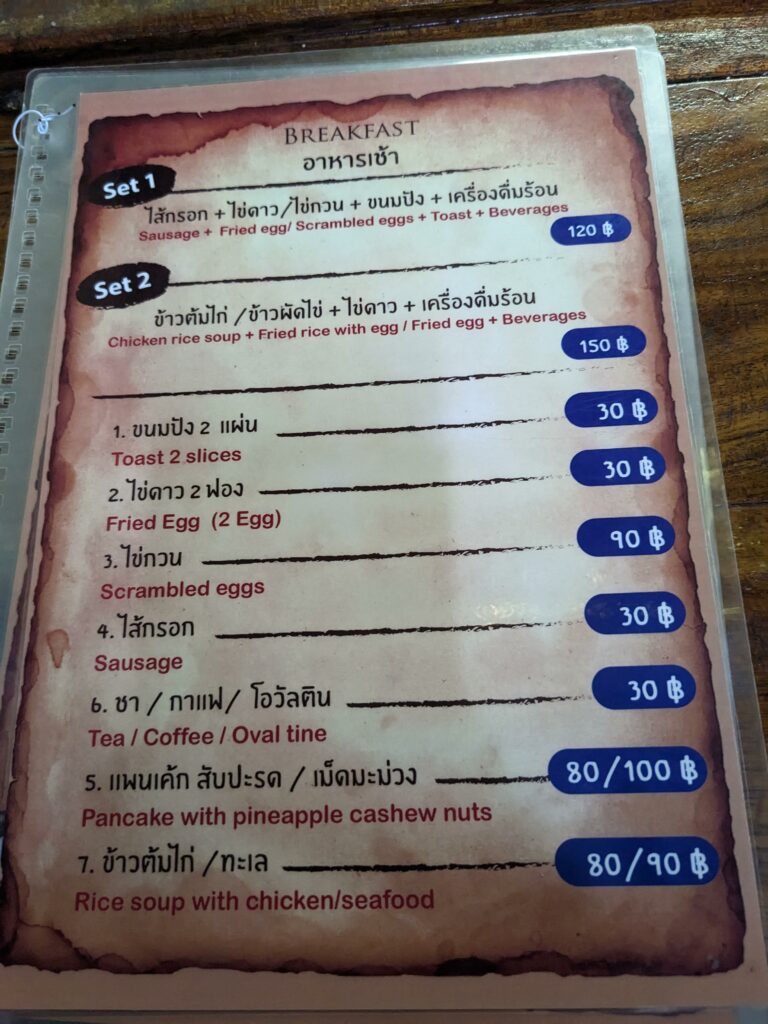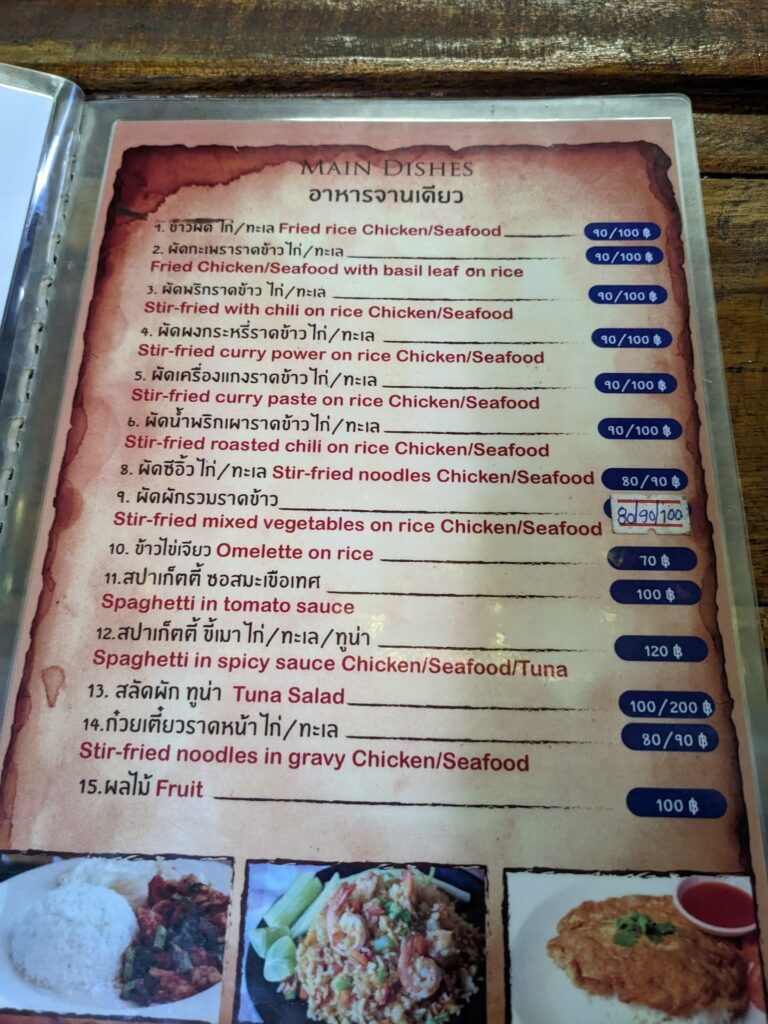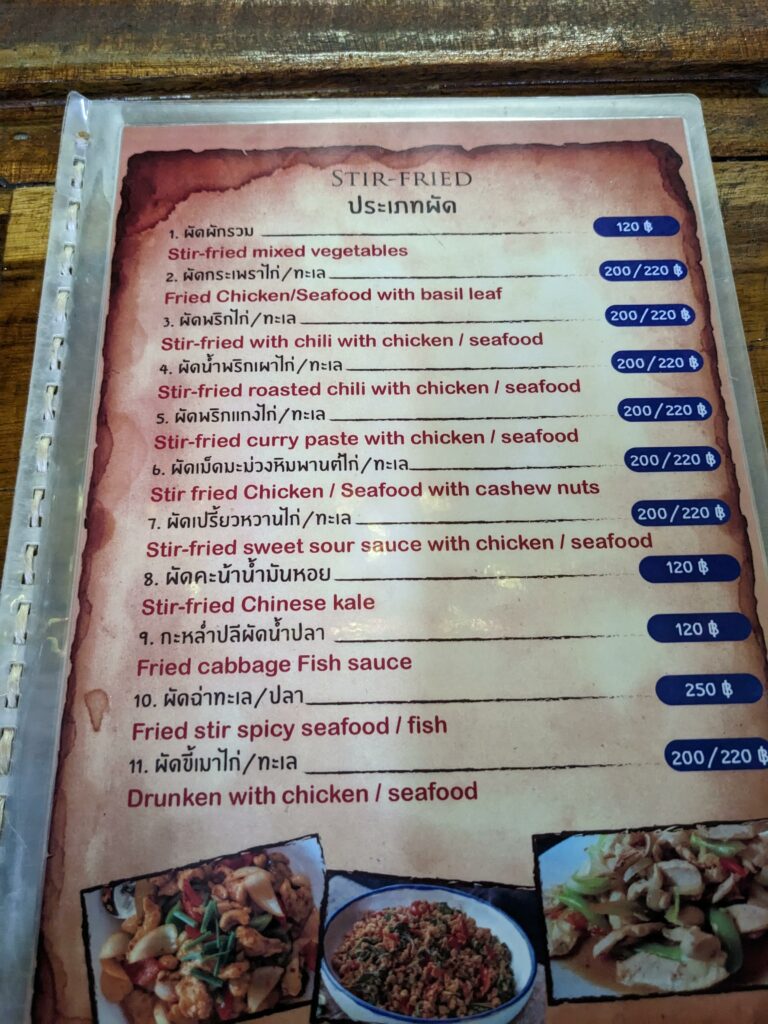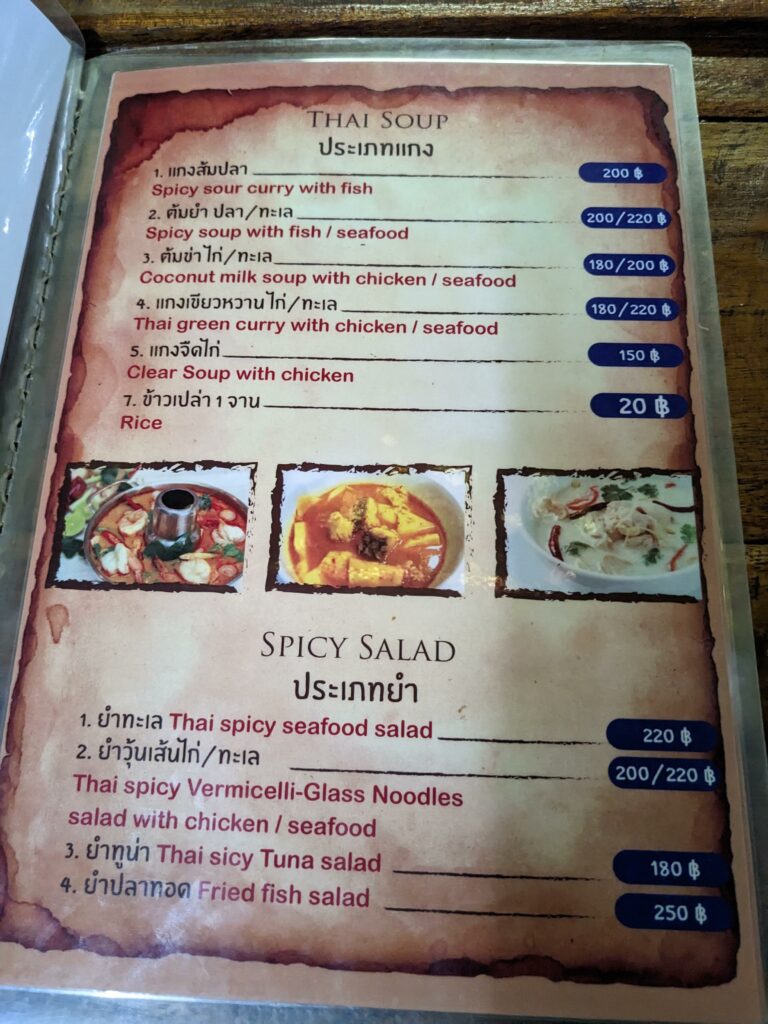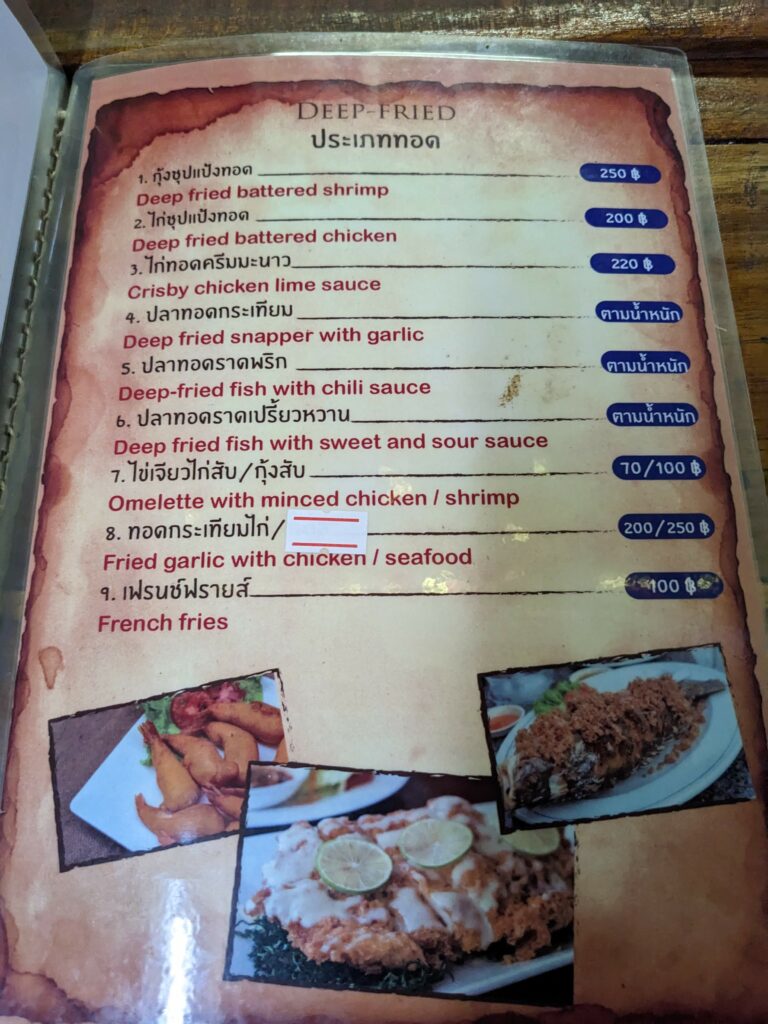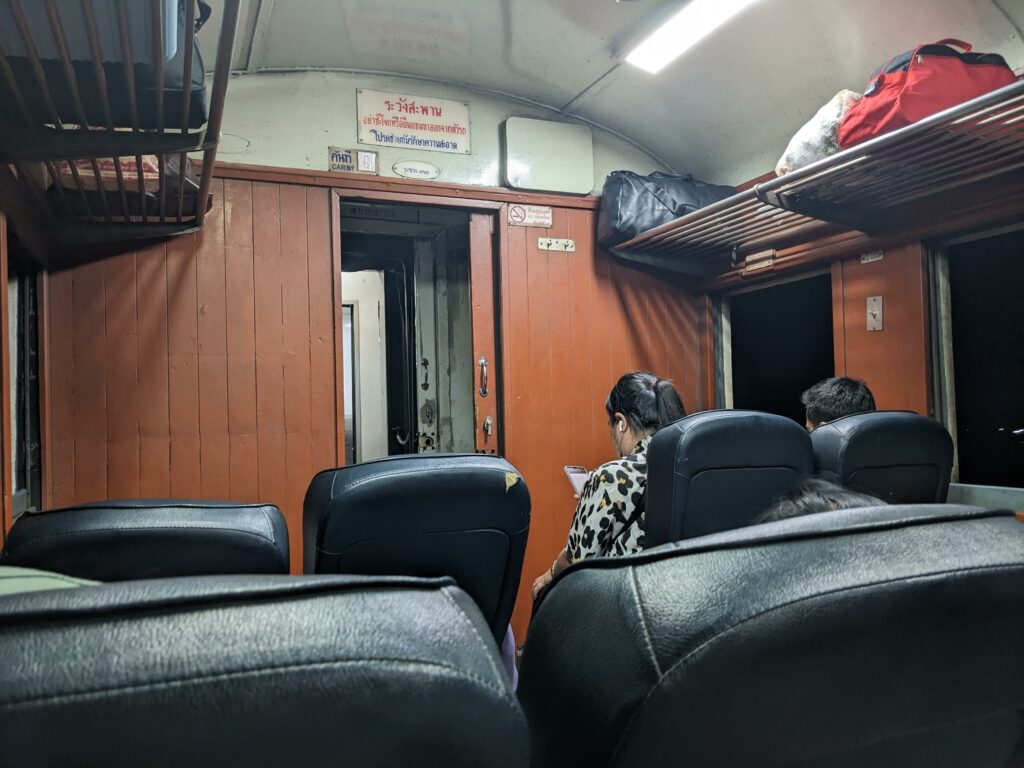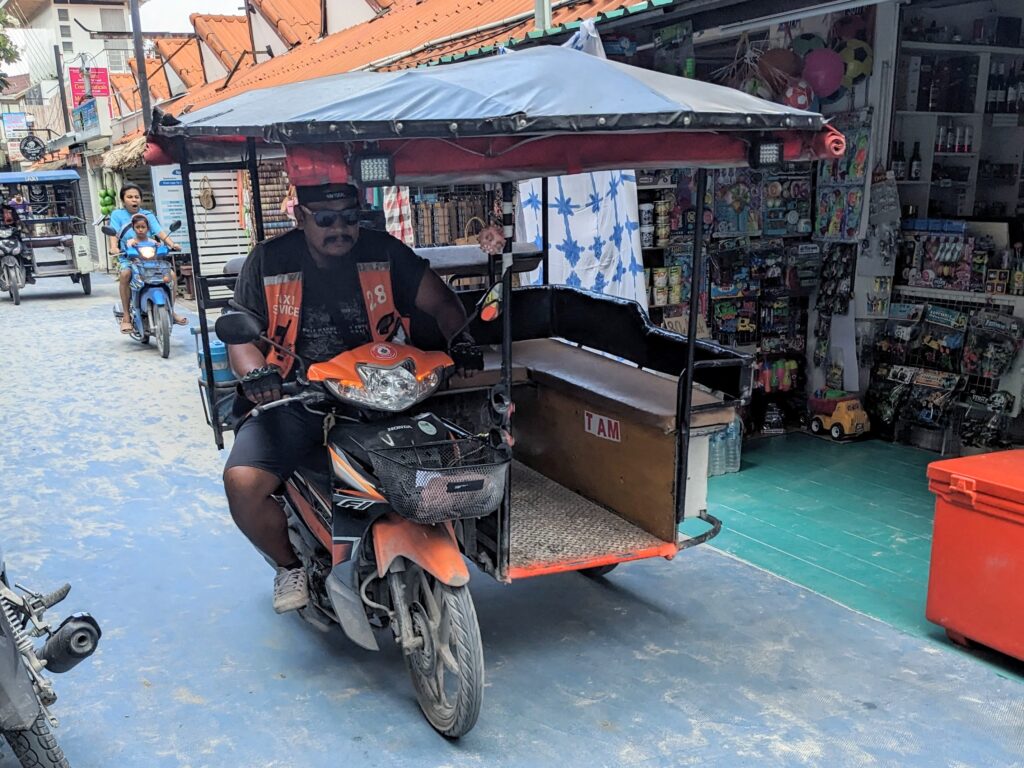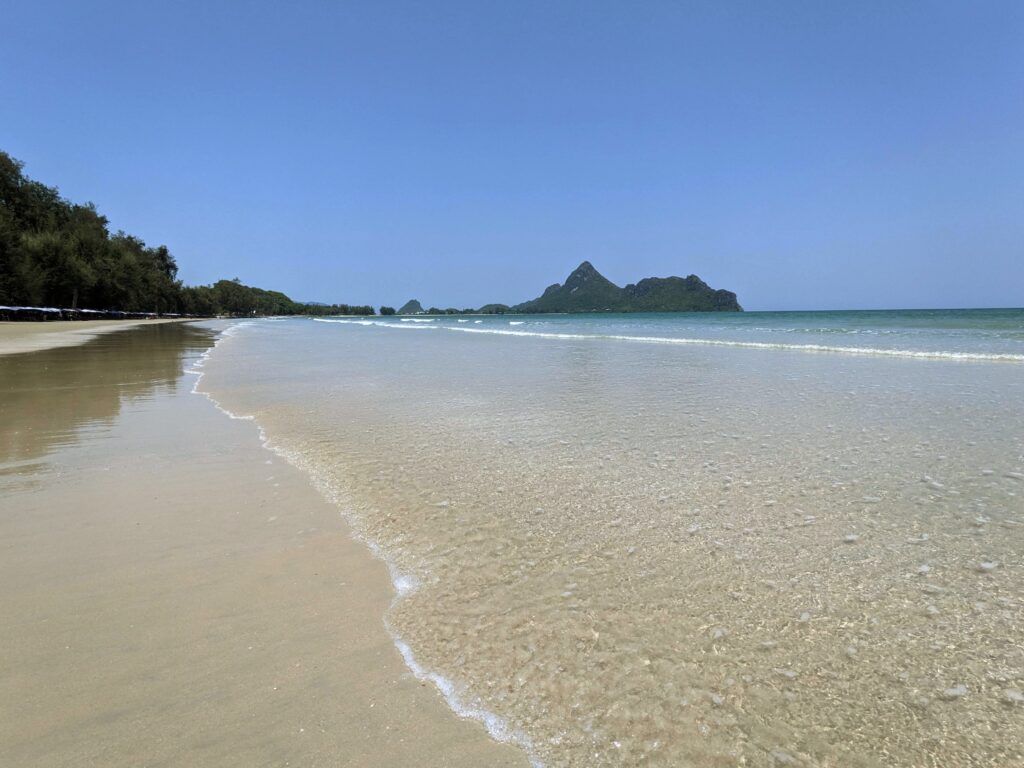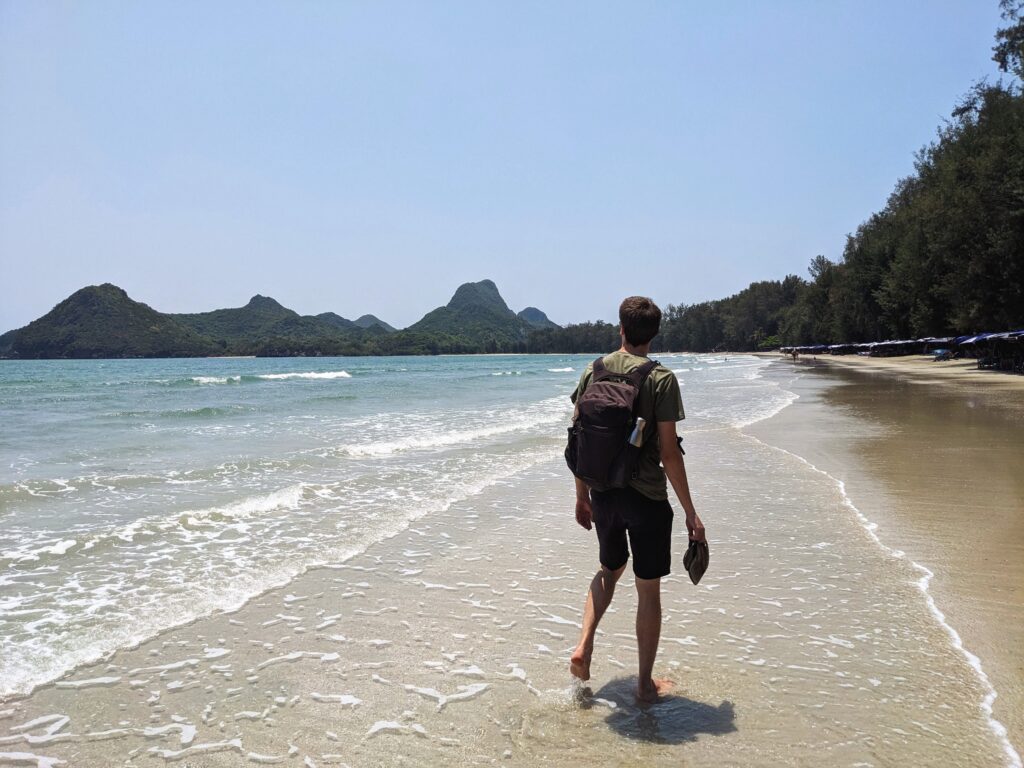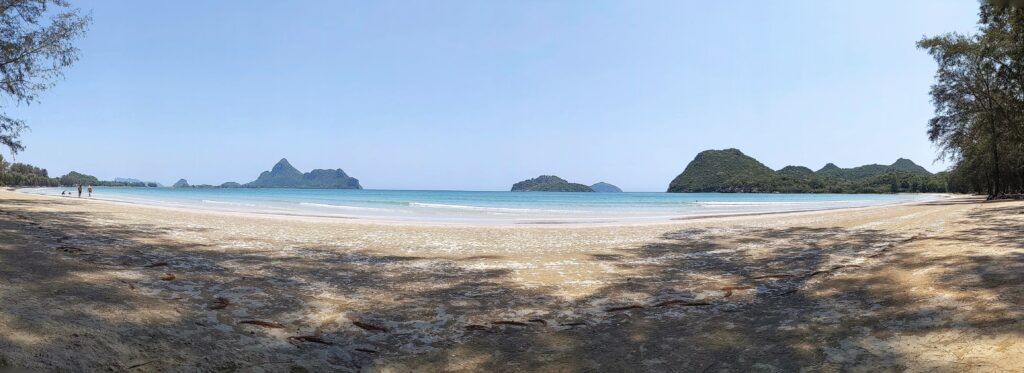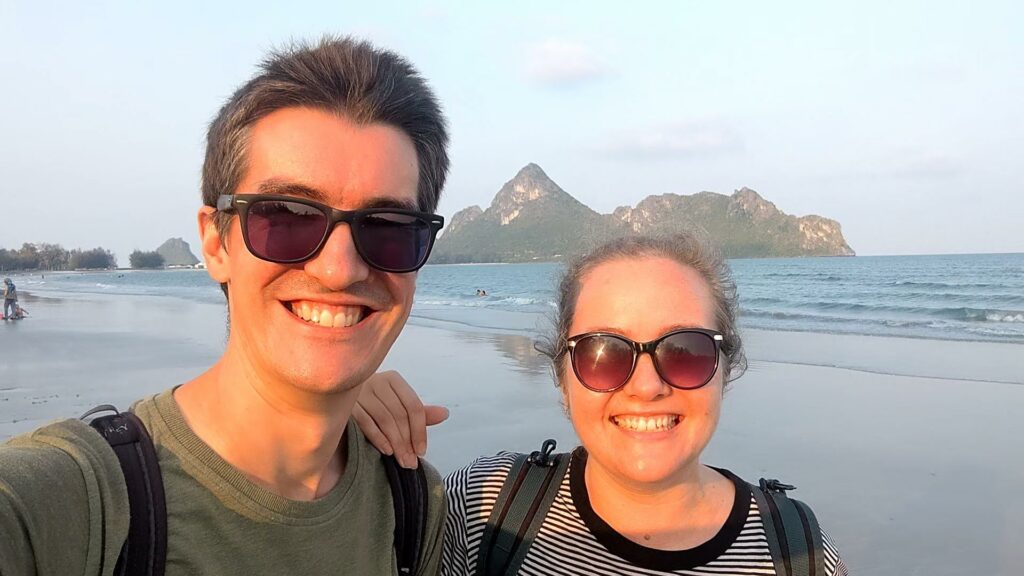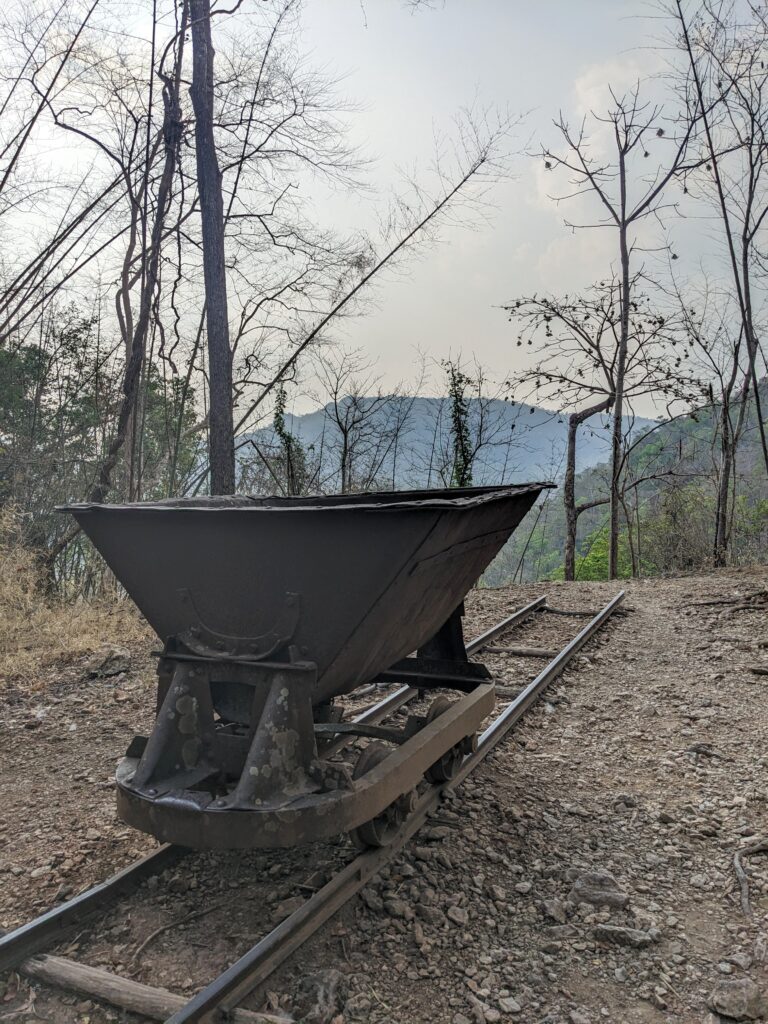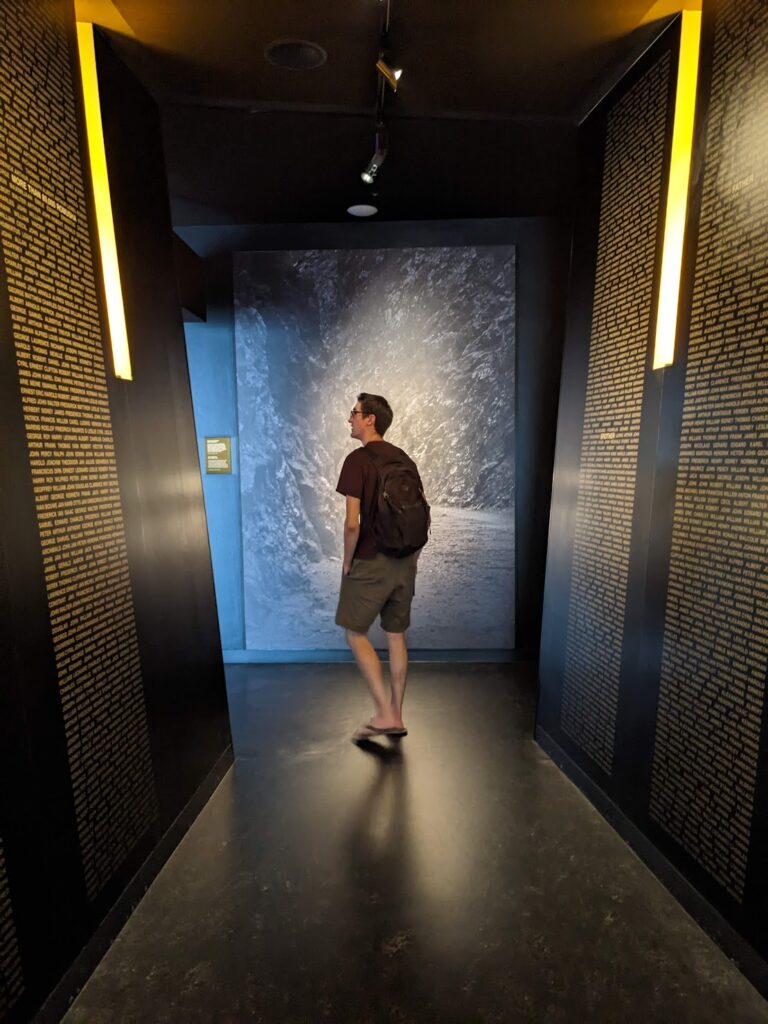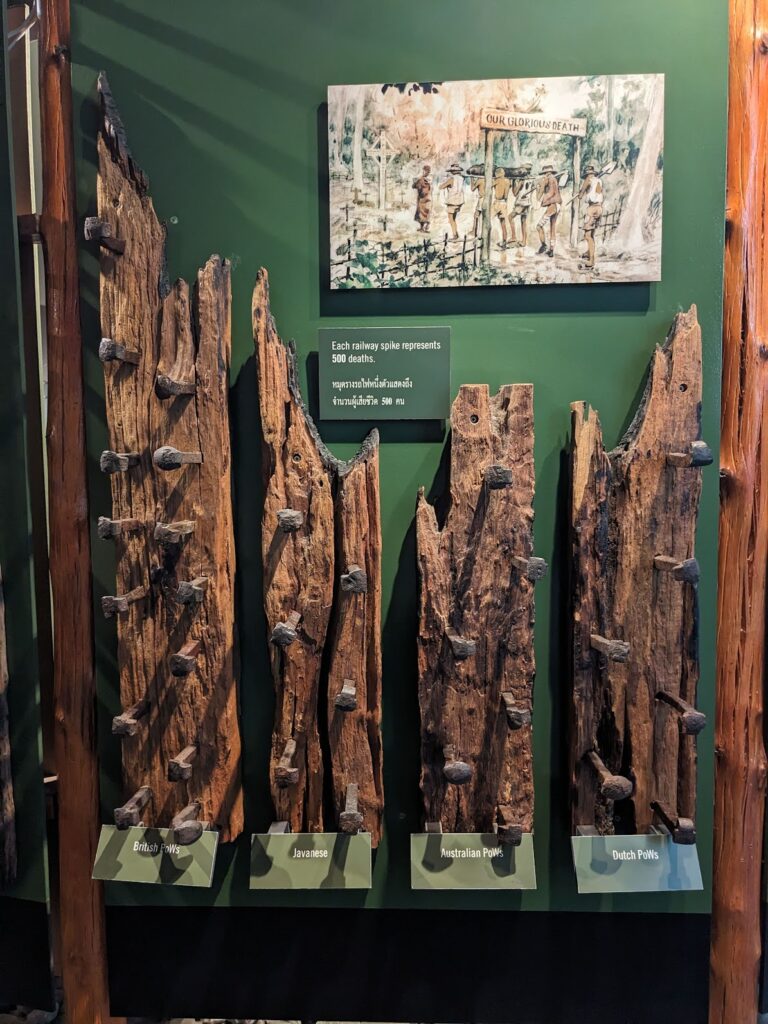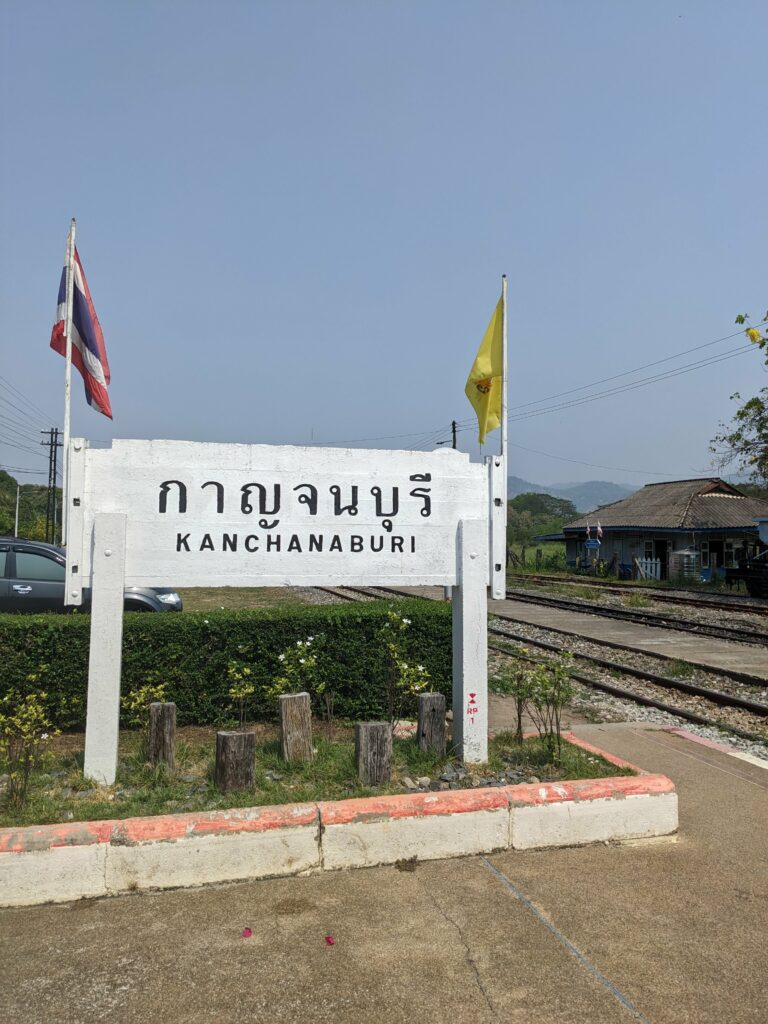From Prachuap Khiri Khan, we took the train north to Hua Hin, where we had a five-hour wait for our sleeper train. The town used to be known as an exclusive holiday destination of the Thai royal family, but nowadays it’s a popular domestic and international holiday resort, with practically every major hotel brand represented along the very long beach. After a confusing transaction at the left luggage office in the train station (where we may have paid someone who didn’t actually work there), we headed off on foot to check out the beach. Even late in the day, it was pretty busy (and incredibly windy), but it did make a great spot for people watching and admiring the many kitesurfers off the beach.

Our next stop was Jek Pia, a local institution that has been in town for more than 50 years, where we continued a long tradition of ordering things that arrive on fire and then immediately regretting our choice. One of the ladies who was serving took us under her wing and came over to check up on us several times – she was simultaneously very maternal and extremely disapproving! She tutted in disbelief that we’d started our hotpot with just four pieces of pork and instead dumped the whole lot in – probably a good move or we’d have been there all evening. When I scalded myself on some hot broth, neither Oli or I were particularly perturbed as I do that kind of thing all the time, but she also witnessed it and was absolutely horrified. Enough was enough! She called out some orders and one of her staff came to confiscate our fire, leaving us just with our cooked food. We wanted to be offended that she didn’t trust us but we were actually quite relieved to have it off the table.

After quick trip around the night market in Hua Hin and then a long wait at the station, we boarded our sleeper train that would take us south towards the provincial capital Trang.


We arrived the following morning later than scheduled and had missed the first minibus to Pak Bara but managed to squeeze onto the second at 11.00, ready for a 13.30 ferry to the tiny island of Ko Lipe. But Ko Lipe wasn’t even our final destination – from the main jetty, we took another seriously bumpy tuk tuk across the island, and then a taxi boat across the water to the sparsely-habited, National Park island of Ko Adang.
Twenty-eight hours after leaving our hotel in Prachuap Khiri Khan, we hopped off the boat and onto our very own desert island.
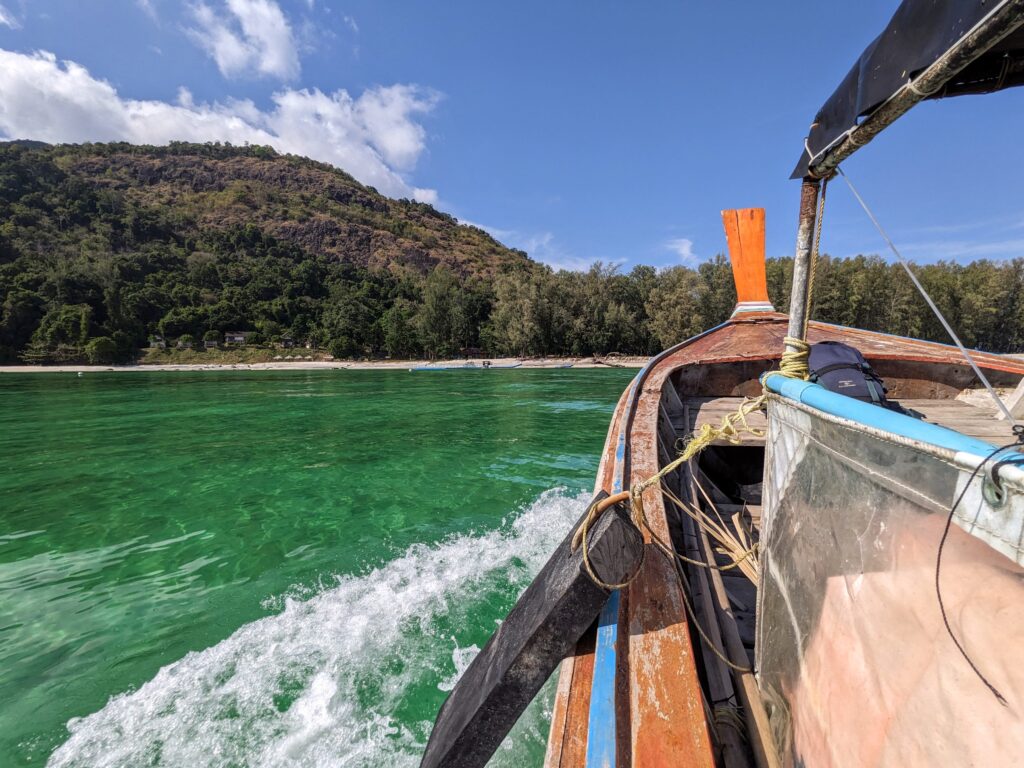
Although Ko Lipe is also a part of Tarutao Marine National Park, it may as well not be, since it has been developed so extensively. In contrast, Ko Adang, a larger island of approximately 5 km by 6 km sitting just across the water, is mostly made up of jungle, peaks, empty white sand beaches and coral reefs. In one small corner, there’s a ranger station, small restaurant, camping area, and a series of little National Park bungalows, which is where we stayed. The bungalows weren’t remotely fancy, but that didn’t matter in the slightest when we were waking up to a gorgeous view of the Andaman Sea.
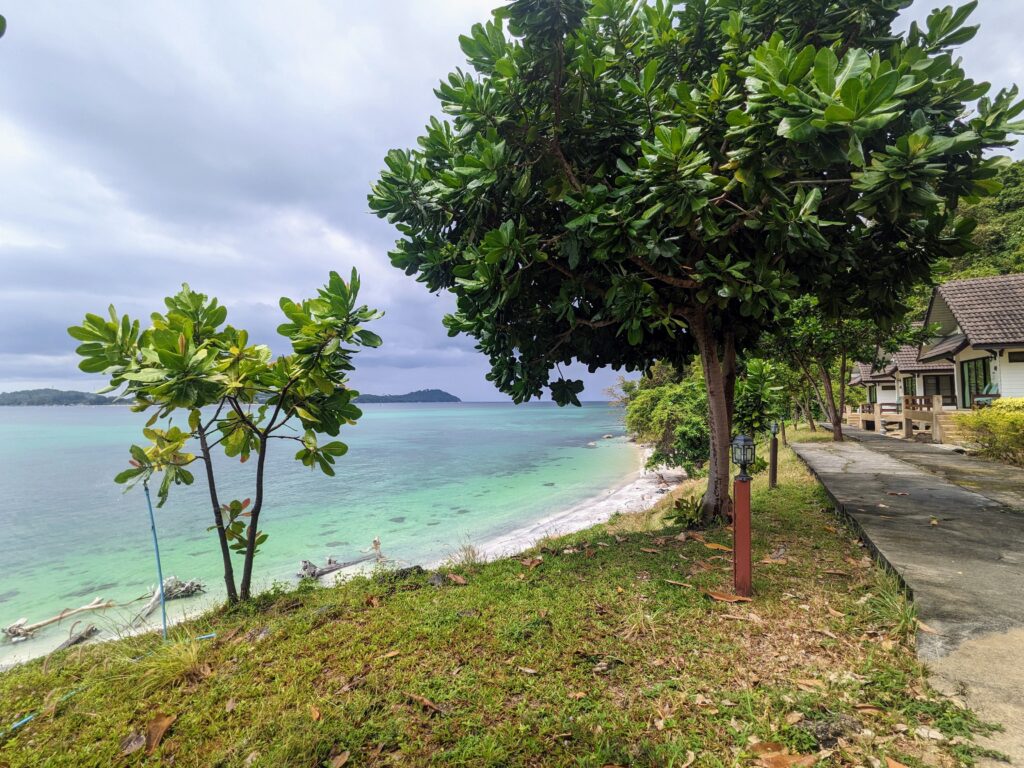
We got up early to take a short hike up to the peak overlooking our beach, about 225 m above sea level. There are three viewpoints, and from the third, we ate our breakfast with a beautiful view across to Ko Lipe. It’s such a tiny island and there were so many people on it – we had to keep reminding ourselves that not everyone is quite as unsociable as us and maybe they liked the company!
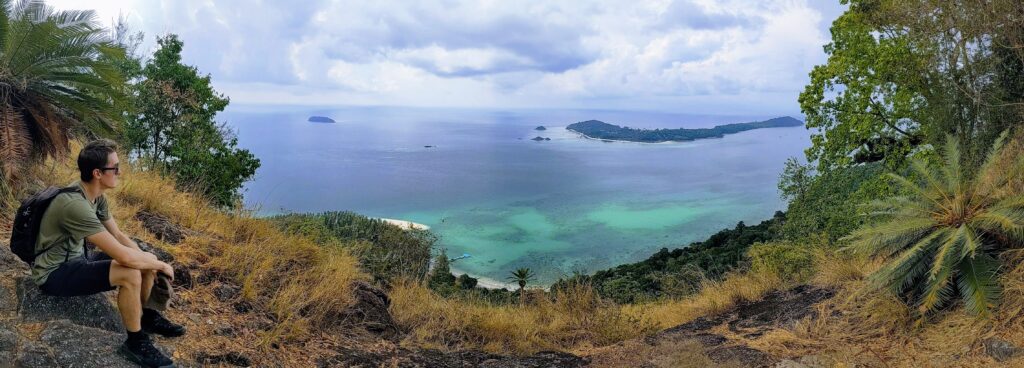
We spent the rest of our time on Ko Adang swimming, walking on the beach, gazing out at the sea from our terrace, and conducting repeated and very detailed budget planning meetings. I should probably explain the last one – somehow, despite estimating how much cash we might need for our few days on the island and adding some contingency, we realised as soon as we arrived that it was going to come down to the wire. By forgoing coffee (😧), planning what we would order for every meal based on price/calorie ratios, and replacing breakfast with the snacks we’d brought, we managed to scrimp and save enough for a luxury item: hiring two snorkels on our final day.

This was a bit of a highlight – the reef was gorgeous, with blue starfish, hundreds of neon-coloured fish and some spectacular corals. We did swallow quite a lot of seawater between us though, as we kept getting hysterical giggles at each other attempting to talk through our snorkels. It turns out the letter ‘b’ is particularly tricky, and don’t even attempt ‘fish’.
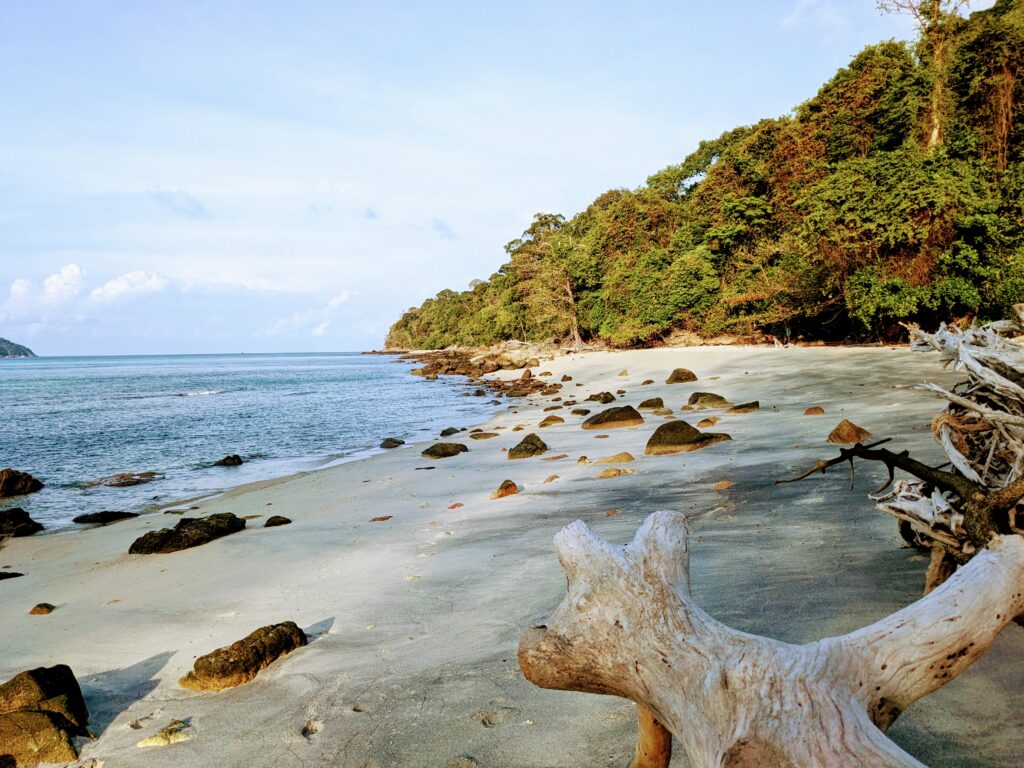
Being a National Park, the wildlife away from the reefs was also pretty cool. We spent a vast amount of time following crabs around the beach – they are fascinating creatures! We also saw plenty of lizards, crab-eating macaques (who, controversially, don’t eat much crab), spectacular schools of flying fish, and most exciting of all, some flying lemurs. This was a first for both of us, and while Oli thought they weren’t much to look at, I fell in love with their funny appearance – somewhere between a big bat, a koala and a sloth.
Perhaps the part of our plan that was most satisfying of all was that our island paradise also happened to be perfectly situated to cross by sea into Malaysia, via an easy ferry connection from Ko Lipe. We were pretty reluctant to leave, though – it’s not often we come across somewhere so perfectly unspoilt yet comfortable. We’ll be back one day!
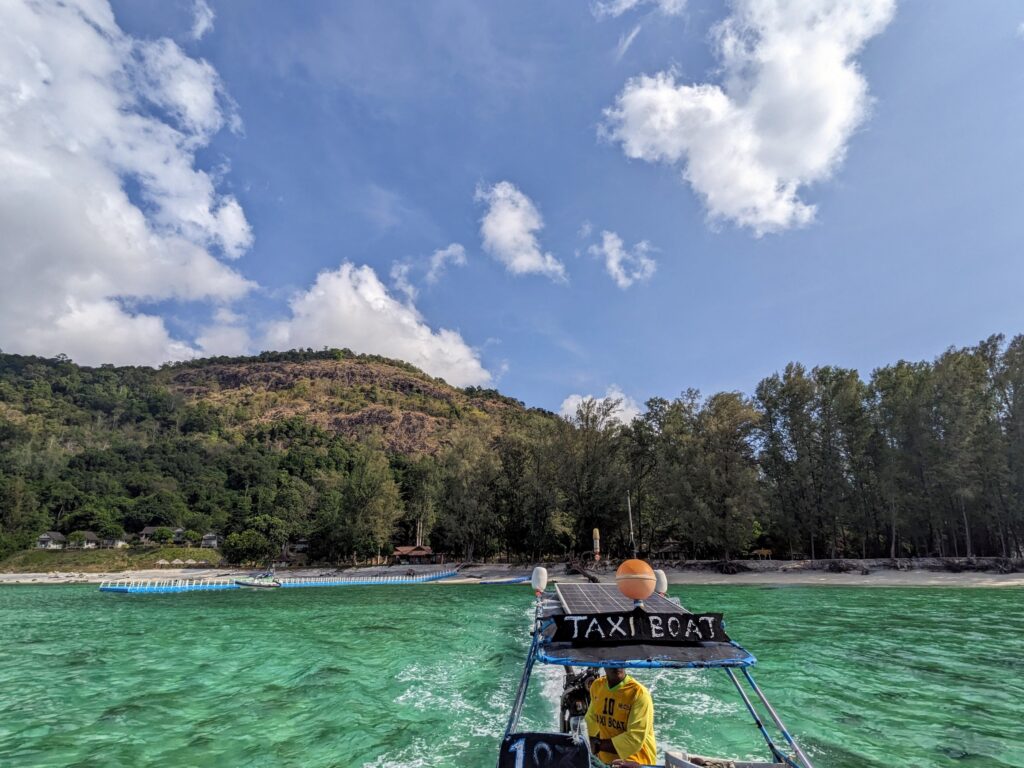
Tips from us
We didn’t find a huge amount of information about Ko Adang online, so just in case you’re thinking of going (do!), I’ve popped a couple of pointers below:
It took us a couple of attempts to book our bungalow. We were able to check availability on the Department of National Park, Wildlife and Plant Conservation website but didn’t manage to make a reservation online (it sounds like this is a common problem). In the end, what worked was to ask our Thai-speaking guesthouse owner to call on our behalf (numbers in this article). She was passed around a bit but eventually spoke to someone who said they would check availability and call back that evening. Unfortunately, we were leaving town, but our next hotel called again and managed to make a reservation with just a first name and they were happy to accept payment in cash when we arrived.
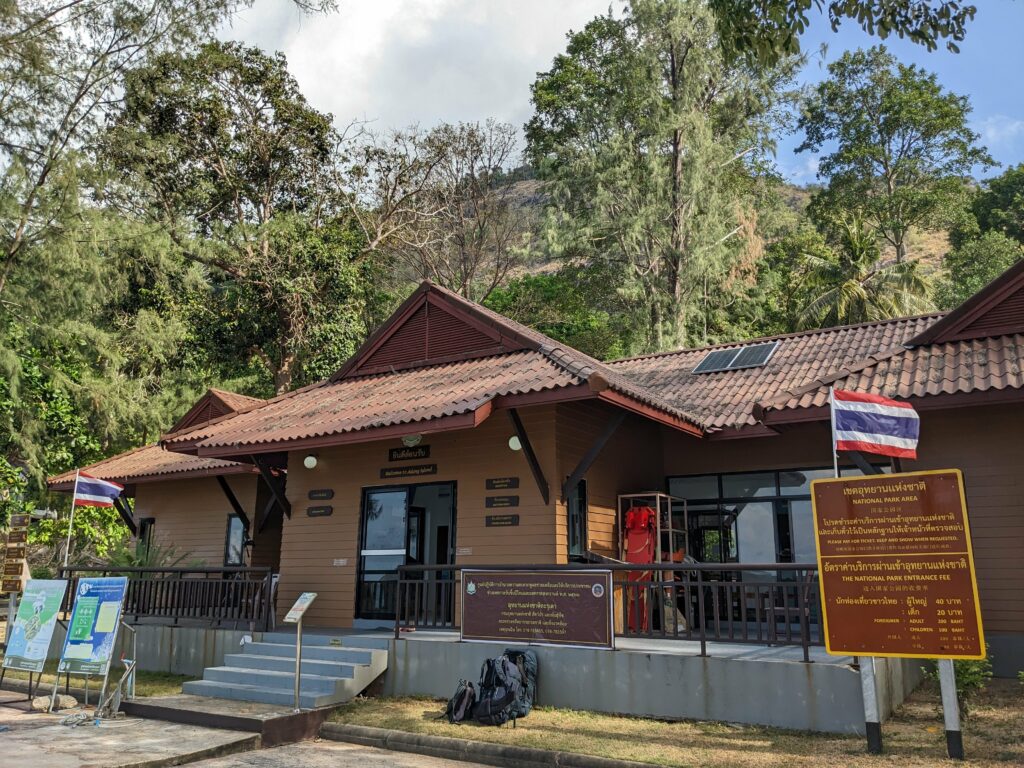
We found this blog post really useful when planning our trip – it helped us decide that Ko Adang was a better choice for us than our original plan of Ko Tarutao. However, they mentioned that bungalows 1-6 all had a sea view, but actually we’d recommend avoiding Adang 5 as it’s set back behind the other bungalows. Adang 1-4 and 6-8 all have a lovely sea view, with the most direct views and greatest seclusion found in the lowest-numbered bungalows (but also the longest walk from the beach and restaurant). We stayed in Adang 6 and loved it.

Prepare for the bungalows to be fairly basic: cold water showers, no WiFi, electricity only between 6pm and 6am, and genuinely the hardest bed I’ve ever slept in – I’m not sure what we were sleeping on but it wasn’t a mattress as we know it. The only thing that caused us any kind of problem was the bed; it really was that hard. If you happen to be travelling with a yoga mat, it’ll come in handy! On the plus side, we had air conditioning, which was an unexpected treat.


There’s no WiFi at all on the island, but the mobile data connection was surprisingly good.
The restaurant doesn’t serve alcohol – not even beer! Apparently this is a recent development and it took us by surprise. One of the campers we met had popped over to Ko Lipe to stock up and the staff were happy for him to store his supplies in their giant cool box, so that might be an option if a cold beer is important to you.
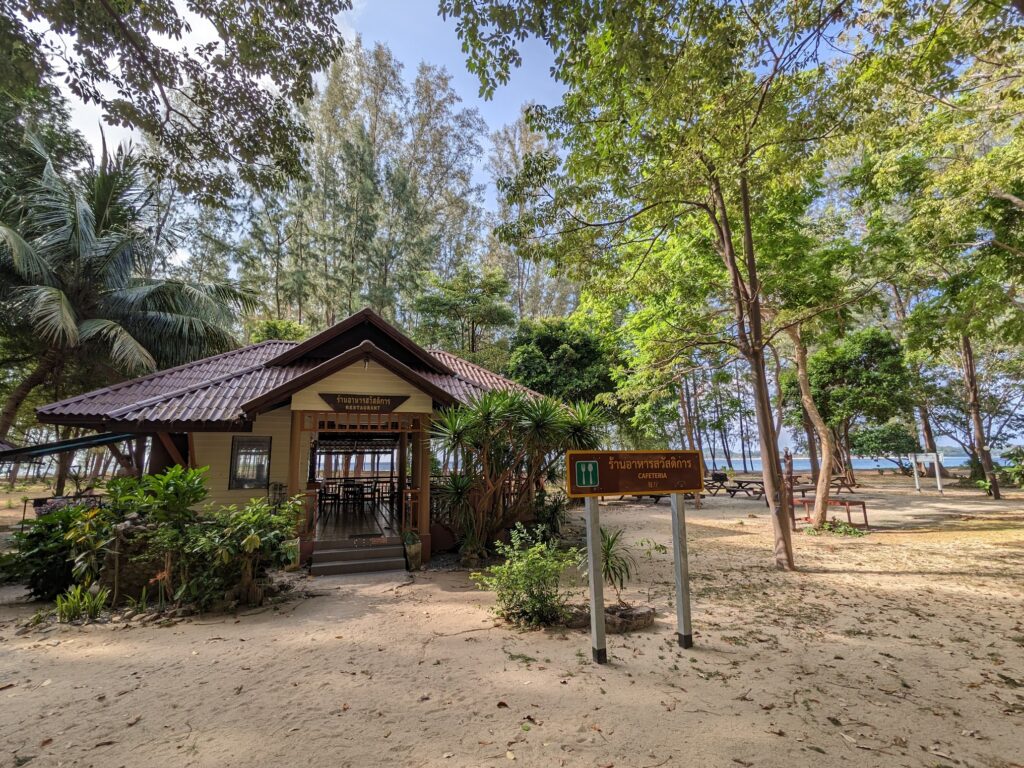
Finally, remember to take enough cash for your time on the island (or you can pop over to Ko Lipe where there are ATMs, but we didn’t want to break the spell of our desert island by going somewhere busy!) The taxi boat from Ko Lipe was 100 baht per person from Sunset Beach or 200 baht per person from Pattaya Beach (where ferries arrive and depart), snorkels cost us 50 baht each to hire for the day, and I’ve popped photos of the restaurant menu with prices below. The portions weren’t huge but the food was tasty.
If you do make it there, enjoy – it’s a special place! And please do say hello to the flying lemurs from me.
